CONSERVATION
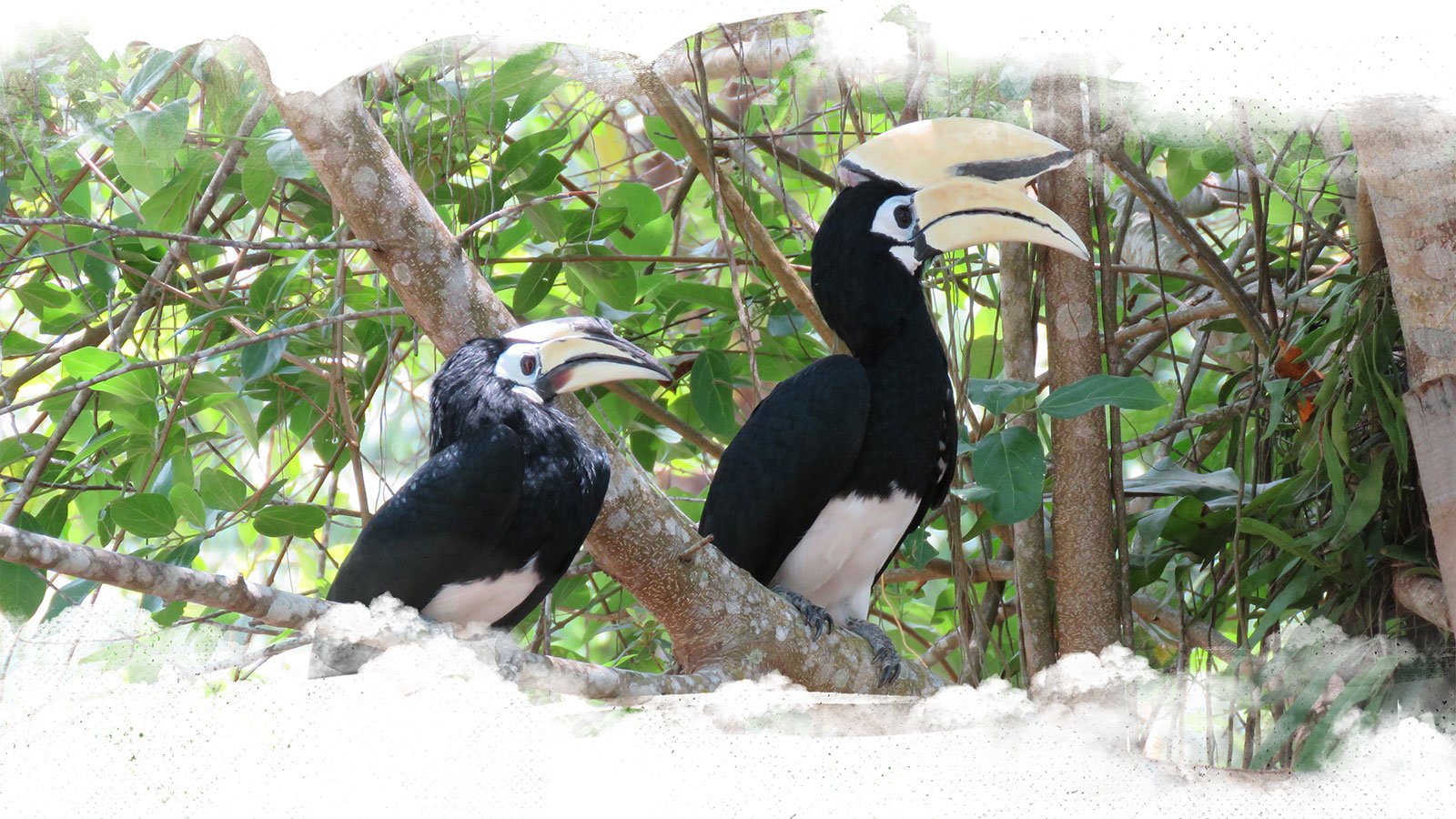
Studies on PNR and its biodiversity components were carried out by SFC, UNIMAS and Malaysian Nature Society (MNS). Despite being located within the urban area of Miri city, studies recorded a notable number of plant and animal species at PNR; 107 plant species and 75 fauna species.
More importantly, PNR has been known to have a small population of Oriental-pied hornbill (OPH) and the first written record of the species at Nature Reserve dated back to 2005 (site known as Piasau Camp then) when the famous pair, Jimmy and the late Faridah were first photographed by Dominique Wan. Sightings of OPH at the camp attracted a lot of interest amongst members of the public which spurred monitoring efforts into the particular avian species. Some examples are;
- 2007 – A resident of Piasau Camp, Dr. Giana Minton started monitoring the hornbills and the nesting site at House 58.
- 2008 – A small interest group, the Piasau Camp Miri Nature Park Society (PCMNPS) began working closely with SFC to monitor the small population of OPH at the then Piasau Camp.
Oriental Pied Hornbill

PNR is the breeding ground for Jimmy (dominant male) and his mate, the late Faridah. The couple since 2005 had successfully produced 56 offspring before Faridah died after being shot in 2013. Hornbills are known to pair for life, and when Faridah died there were concerns about the well-being of Jimmy.
The worries however were set aside when Jimmy was observed with a new mate, Juliet a few months later. Juliet is in fact an offspring of Jimmy and the late Faridah! The ensuing courtship and mating between Jimmy and Juliet resulted in two offspring, Musa and Cecilia from Juliet’s first nesting cycle (November 2014 – February 2015).
In February 2016, the couple produced another offspring, Ching and with her addition to the family, 21 individuals have been recorded roaming PNR to date. A nesting tree located at House 58 (current PNR’s Ranger Station) within the Nature Reserve is frequently used as the nesting site for the Jimmy-Juliet pair. The small Oriental-pied hornbill population in PNR has been monitored by SFC and the Malaysian Nature Society (MNS), Miri since 2012. The hornbills seen at PNR has been recorded and are as tabulated below:
| Pairs | Bachelors | Deceased |
|---|---|---|
| Jimmy & Juliet | Abong | Faridah |
| Anthony & Alice | Han | |
| Ah Kaw & Ah Moi | Karim | |
| Julia & Ibrahim | Moses | |
| Robert & Cathy | Munyung | |
| Rosita & Sam | Ching | |
| Musa & Cecilia |
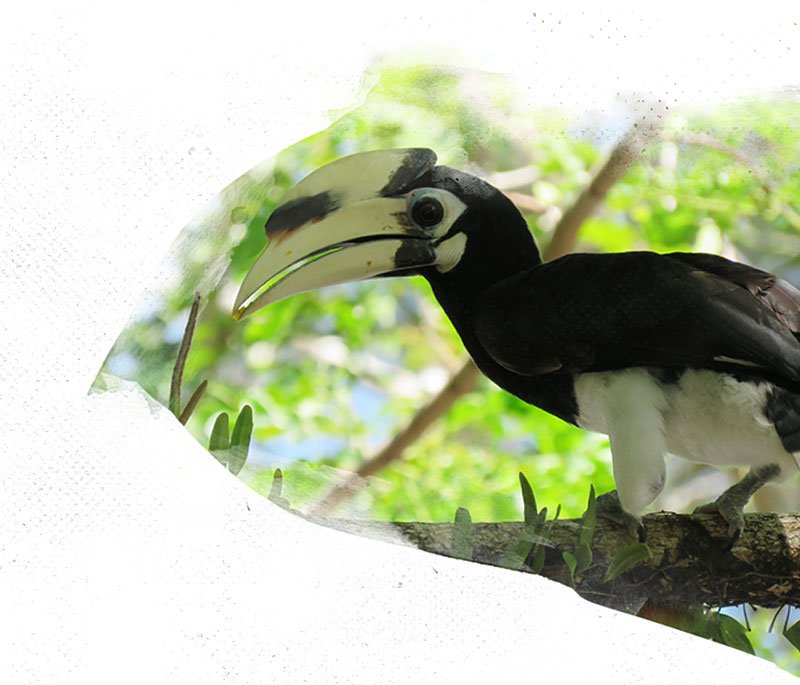
Oriental Pied Hornbill Monitoring
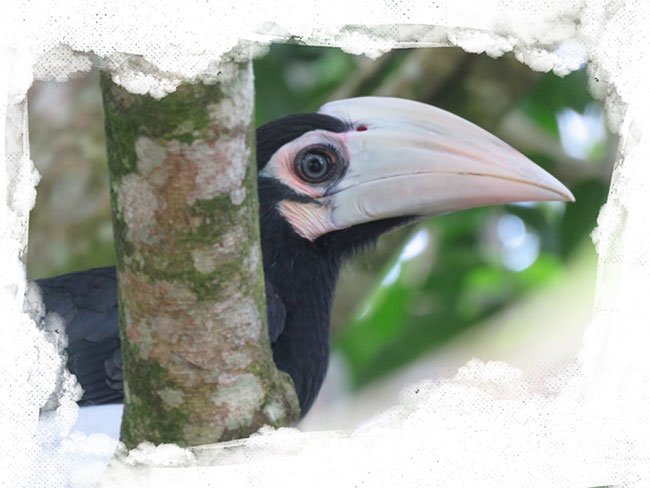
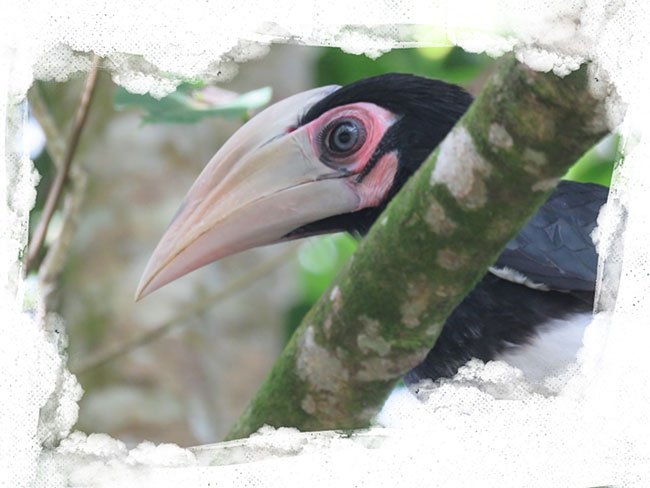
Breeding Cavity Enhancement

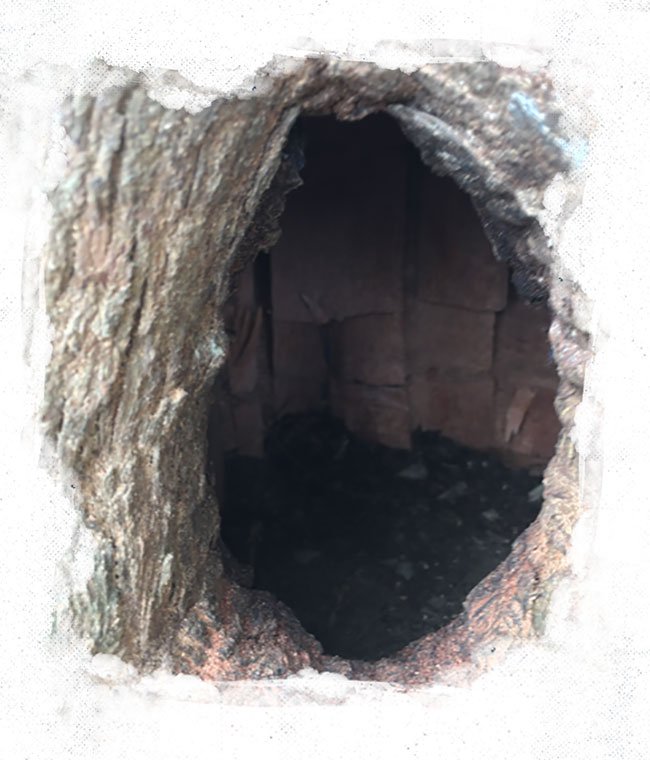
Enrichment Planting
Various native plant species will be planted at PNR to provide sufficient food sources and a conducive environment for the wildlife residing within the Nature Reserve when the trees grow and start bearing fruits in years to come. An experimental plot with a total area of 0.22 hectare was initially set up at PNR to identify plant species that could suitably grow on the soils of PNR and the suitable methods to plant them. Several tree planting activities had been carried out at the Nature Reserve to commemorate the following occasions;
a) Piasau Nature Reserve’s Earth Breaking Ceremony (May 2014)
b) Sarawak Tourism Board’s Borneo Jazz Festival (May 2015)
c) Sarawak Tourism Board’s Borneo Jazz Festival (May 2016)
d) Naim Cendera-Forest Department Sarawak Tree Planting Activity (April 2016)
Under the BBtRF Project, five gardens, namely, Piasau Garden, Mixed Species Garden, Fruit Tree Garden, Ficus Garden and Herbal Garden have been established and these gardens are located in Zone 2 (Visitors Use) and Zone 3 (High Density Use) based on the zoning specifications described in the Gensler’s Masterplan for Piasau Nature Reserve.
The ‘Bring Back the Rainforest’ Launching scheduled on Sunday, 11 September 2016 will be graced by Tuan Yang Terutama Tun Pehin Sri Haji Abdul Taib Mahmud, the Governor of Sarawak. SFC expects to draw the attendance of 1,000 participants at the event where relevant stakeholders such as NGOs, school children, local communities and others will also partake in the tree planting activity conducted in conjunction with the project launching.
Adoption Programme
The plight of hornbills has slowly gained attention of many over the world of the 57 hornbill species found worldwide (Pilai et al., 2013), eight species are recorded in Sarawak. Hornbills are iconic species of tropical rainforests and are known as farmers of the forests. However the habitat they depend on for feeding and breeding is shrinking and the future of hornbills is affected.
Only one species is found in Piasau Nature Reserve, the Oriental Pied Hornbill. A pair of OPH (Jimmy and Faridah) has been breeding in the reserve since 2005 and approximately 56 offsprings were produced. It was in the height of their popularity that one of the pair, Faridah was brutally killed by a group of delinquents in September 2013 (Source: PNR website) and consequently, a public outcry and the gazettement of Piasau camp as a nature reserve. Today Jimmy has paired with a new mate, Juliet and has continued to breed for four breeding seasons producing 7 offsprings.
Oriental pied hornbills Anthracoceros albirostris are known to occur along the coasts, offshore islands, and forest edges throughout the lowlands (Smythies, 1999). They are the only species which is coastal and found in forest edges, but have also been recorded far inland, in heavily logged forests. They are mainly frugivorous; feeding on berries and ficus but protein intake is thought to be higher during breeding season, which is obtained from animals such as frogs, lizards and snails.
As with most hornbills, they do not excavate their nests and depend solely on primary cavity nesters or naturally occurring cavities for nesting. The female seals herself in a nest cavity and leaves only a narrow slit through which the male passes her food until the nesting period is complete (Kemp, 2001). Hornbill conservation programs, as with any program cost a great deal and this adoption program is aimed at raising funds to support such work. As we educate the public on hornbills and their feeding and breeding requirements, we are offering public involvement in our habitat enhancement programs as well as improvement of nest sites for the birds.
The program aims to:
- Raise funds for hornbill conservation and improvement of nest boxes
- Extend ownership of the program to other parts of the world
- Disseminate information of hornbill conservation efforts carried out in Sarawak
The adoption funds support hornbill conservation works, which include:
- Projects on hornbill conservation
- Educational programs to promote awareness on hornbill conservation
- Food and medication for hornbills in our wildlife rehabilitation centres
SARAWAK FORESTRY welcomes caring individuals and corporate bodies to participate in the Hornbill Adoption Program. Sponsorship packages are available to help improve Hornbill Conservation in Sarawak, as tabled below:
A) CORPORATE PACKAGES
| Packages | Platinum | Gold | Silver | Bronze |
|---|---|---|---|---|
| Rates in MYR | 100,000 | 50,000 | 20,000 | 10,000 |
| Adoption period | 10yrs | 5yrs | 2yrs | 1yrs |
| Eligibility | ||||
| Adopt a specific hornbill in the Reserve | √ | √ | √ | √ |
| Receive yearly report on your adopted hornbill in our Reserve via email or website | √ | √ | √ | √ |
| Co-branding opportunities in the Reserve | √ | √ | √ | √ |
| Media announcement on your adoption | √ | √ | √ | √ |
| Receive a hornbill adoption certificate | √ | √ | √ | √ |
| Receive hornbill adoption T-shirt and cap | 10pcs | 5pcs | 2pcs | 1pc |
| Complimentary single use of facilities e.g auditorium, meeting room, etc. at Piasau Nature Reserve, Miri (accommodation excluded) | √ | √ | √ | √ |
| Complimentary guided tour at Piasau Nature Reserve | Twice a year | Twice a year | Once a year | Once a year |
| Complimentary participation in Tree Planting Activities at Piasau Nature Reserve | √ | √ | √ | √ |
A) INDIVIDUAL PACKAGES
| Packages | Platinum | Gold | Silver | Bronze |
|---|---|---|---|---|
| Rates in MYR | 100,000 | 50,000 | 20,000 | 10,000 |
| Adoption period | 10yrs | 5yrs | 2yrs | 1yrs |
| Eligibility | ||||
| Adopt a specific hornbill in the Reserve | ||||
| Receive a hornbill adoption certificate | ||||
| Receive hornbill adoption T-shirt and cap | ||||
| Adopter’s name will be made available/advertised in the Interpretation Centre of the Reserve | ||||
- The adoption fund will be deposited directly to WILDLIFE CONSERVATION TRUST ACCOUNT
- Adopters are required to bear the charges for cheque clearance or inter-bank funds transfer
- Certificates are to be collected at the SARAWAK FORESTRY Corporate Office or Piasau Nature Reserve
- Scanned certificates can be sent by e-mail with no extra charges; costs incurred to be borne by individuals who would like their certificates to be couriered.
Desired Results
- Sufficient food supply and a conducive environment for wildlife species residing in PNR
- Evolving PNR as a major birding spot in Sarawak
- Increase in visitors’ arrival to PNR which offers opportunities for visitors to experience rainforest landscape in an urban setting
Project Deliverables
The project is expected to deliver the followings:
a) Gardens (Piasau Garden, Mixed Species Garden, Fruit Tree Garden, Ficus Garden and Herbal Garden)
These gardens serve similar roles as the botanic garden in plant conservation and education such as:
Develop Horticultural and Cultivation Skills
Species diversity can be conserved in the gardens as horticultural and cultivation skills allow original species that were once at Piasau to be planted back. Apart from that, restoration and rehabilitation of degraded habitats would be made possible through the development of these skills.
Living Collections of Plants
The collections of the various plant species in the gardens will serve as gene pools where plant genetic materials are conserved.
Education
The gardens would provide avenues for outdoor learning experiences through thematic interpretation.
b) Providing a Suitable Habitat for Hornbills
PNR is now renowned for the breeding Oriental-pied hornbills (OPH) residing within the Nature Reserve. The planting of food trees will provide shelter and supply sufficient food to not only hornbills but also other wildlife species at the Nature Reserve.
c) Transforming Piasau Nature Reserve as a Major Birding Area
When the trees mature and produce fruits, PNR will be a haven for the birds and other wildlife species. The congregation of the birds and other wildlife will be a sight to behold and this will surely attract birders and nature lovers to the Nature Reserve.
